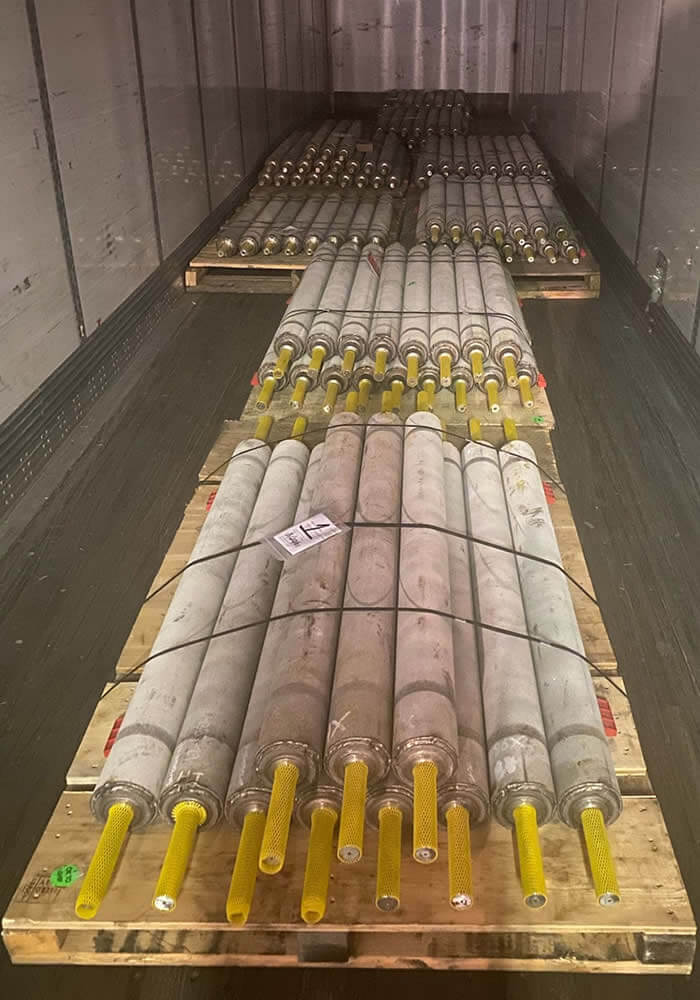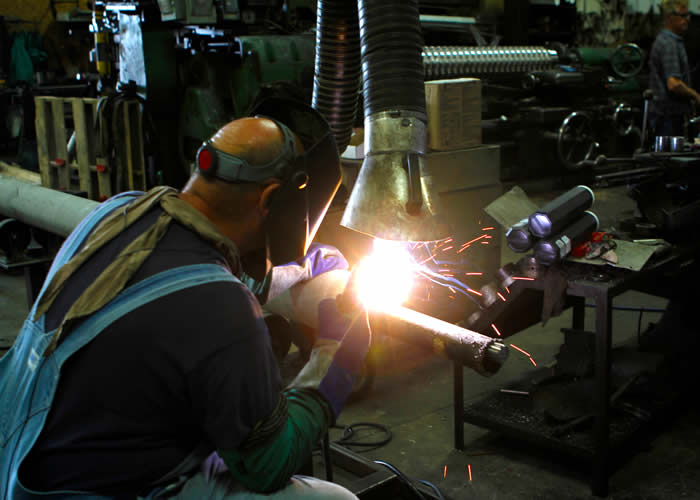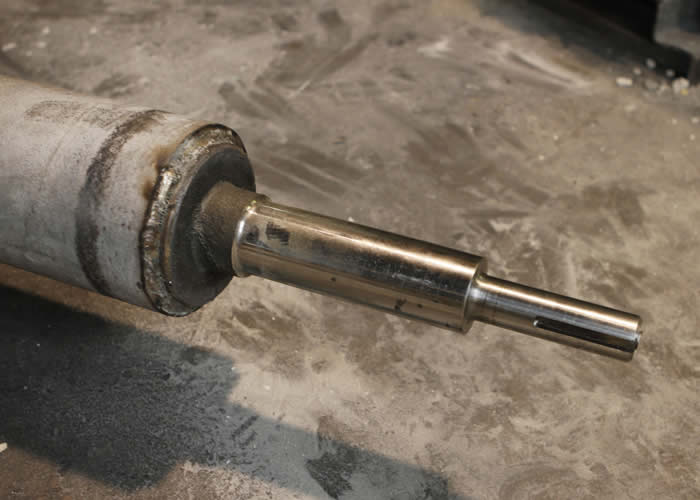By supporting the belt through the furnace, support rolls play a critical role in the longevity of belt life. Just as the drive drum has the unique stress of pulling the belt through the furnace, support rolls have unique stresses dependent upon location, either inside or outside the hearth, environment, and load. With decades of design experience, our engineering team can help you address these stresses to help maximize the use of the furnace.

In the late 1990’s a new design of cast-link furnace was placed into service. This 54”-wide furnace, in the following years, would prove to be the best of this type of equipment yet produced. The unique feature of this furnace was that the rolls, along with the drive drum, were synchronized to turn at the same rate (ft/min). This uniform velocity meant that the belt floated over the rolls; thus, any stress on the pins and links was at an absolute minimum.
The result of this engineering was a furnace that was able to heat-treat 225 million pounds with very little maintenance. When they removed the first belt from service, it was due to alloy attrition, not excessive stretching or loss of pitch. Not only was belt life dramatically increased, but also the ability to control belt tracking increased.
Many existing furnaces can be retro-fitted with synchronized rolls for the hearth, and, in most cases, return rolls can be added in place of skid tiles or rails. The increase in belt life and lower operational maintenance of these upgraded furnaces more than warrant the cost of the rework.
Accuracy is critical in a synchronization project. Therefore, hearth and return rolls should be machined to maintain, plus-or-minus, ten-thousandths of an inch total variation with each other. In addition, it is necessary to minimize any out-of-sync condition because any error could multiply stress by a factor of three. Thus, tubes used in “as-cast” condition with a tolerance of one-sixteenth then the roll circumferences throughout the hearth could vary by three-sixteenths. Over many furnace cycles, this is enough to reduce belt life substantially.

Many of our customers ask us the difference between a tapered and a plug trunnion style roll. To answer this question, we must go back to the early days of heat treating, when most cast link belt and roller hearth furnace manufacturers built furnaces equipped with tapered trunnion type hearth rolls.
Later, furnace companies and alloy producers began to examine the most frequent reasons that hearth rolls fail in service. Chief among the failures was a fracture of the shaft at, or near, where the trunnion flares from the straight shaft. For a taper-style trunnion, this transition usually occurs in the high-temperature area of the furnace. The obvious solution to this problem was to move the diameter transition towards the wall of the furnace where it was cooler, and as a result, the plug trunnion was born.
As with many design changes, the attempt to gain even more occurred by changing the shaft material; other furnace designers changed the trunnions to mild steel shafts instead of a higher alloy. Unfortunately, most steel shafts fail due to the nature of atmosphere by-products, which corroded the steel shafts in a very short time. For this reason, Omega only produces alloy trunnions. However, it is possible to use a lower alloy plug trunnion with a higher alloy tube and, thus, reduce the cost of the hearth roll.

There are two significant benefits to plug trunnions. As discussed above, the diameter transitions occur near the much cooler metal furnace wall, which results in delayed mechanical failures.
Second, plug trunnion hearth rolls are more resistant to metal dusting (AKA carbon corrosion) because they vent closer to the furnace wall where the atmosphere has already precipitated most of its carbon. As a result, this venting prevents carbon buildup inside the roller and, in most cases, eliminates this mode of failure.
Omega Castings is the premier producer of alloy hearth rolls for the heat treat industry. We have achieved this level of quality by producing a hearth roll that provides the highest value for the customer. We do this by manufacturing rolls in either a plug or tapered style with one-piece cast trunnions in the alloy most suited to the customer’s application.
Yet, it takes more than quality construction and alloy to make a hearth roll that is the longest-lasting in the industry. We take the time to ask the right questions, such as: “What is the loading, application temperature, and atmosphere the roll will have to serve?” We then engineer our rolls so that, in case of power failure (or other issues causing the furnace to halt motion), our rolls can support the load, at temperature, without bending.
Sound complex? It is to some degree. However, Omega will do this engineering for you at no cost when you purchase your belt and rolls from us.
Contact Us today with your heat-resistant, high temperature, cast alloy furnace part needs. Our staff can help you select the correct parts or engineer and then fully cast the high-quality alloy parts for your specific application.
In 1975, Omega Casting's founding mission was to produce alloy castings and assemblies with superior metallurgical and dimensional integrity and to deliver those castings and assemblies in a timely manner to our customers at a competitive cost. (READ MORE)
In the ever-more-competitive global marketplace having a furnace operating at top efficiency is not only important, it is essential. For this reason Omega has developed and pioneered the synchronized drive technology that allows for more furnace load capacity... (READ MORE)
After running several companies, Robert Cutshall founded Omega Castings, Inc. in 1975. It was during a gas shortage and Battle Creek, Michigan was picked as a location due to its natural gas reserves. Locating in Battle Creek assured that there would be fuel to run... (READ MORE)
